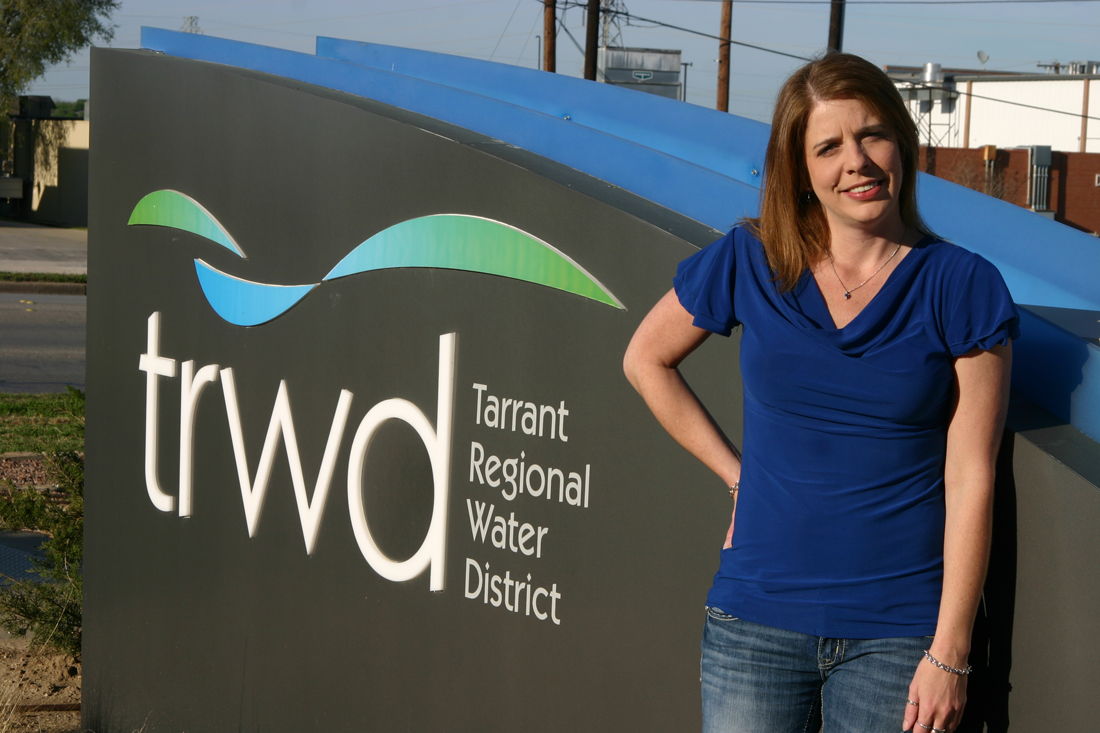On May 11, three of the five directors’ positions are up for election on the board of the Tarrant Regional Water District, one of the most powerful public agencies in North Texas.
How powerful?
Water district officials in recent years have spearheaded the $1 billion Trinity River Vision project, which relies on taxpayer money even though the public wasn’t given the opportunity to vote on it. Along the way, directors have pursued a $2.3 billion pipeline to pump water from Lake Palestine to the Metroplex and sued Oklahoma over water rights in a case that has climbed to the U.S. Supreme Court.
The agency is among the state’s largest raw water suppliers, feeding 1.7 million residents in an 11-county region. And demand keeps growing. Water officials must plan decades ahead to keep the taps flowing despite population growth and decreases in rainfall.
The three incumbents have been around for a while. Board director Victor Henderson, an oil and gas executive, has served since 1985. Hal Sparks, an attorney, joined the board in 1988. Retired engineer Jack Stevens is approaching 10 years tenure. The election could play out as a referendum on whether residents appreciate the agency’s accomplishments in the past decade or prefer others — a new majority — to lead it in a new direction.
Stevens was the only incumbent to respond to Fort Worth Weekly’s interview request for this article. He praised the water district and the board for actively seeking new water supplies, including in Oklahoma and East Texas, and for promoting water conservation techniques.
“The Tarrant Regional Water District ought to be given a couple of gold stars for what they’ve done for conservation,” he said. “The people of Fort Worth have really embraced conservation of water even without having the mandatory water restrictions.”
He wants to make sure water is plentiful for future generations, he said.
“We have enough for quite a while, but we need more, and that’s what we’re doing,” he said.
Critics say the agency has meandered far from its original purpose of preventing floods and ensuring water supplies. The water district was created after a 1922 flood overwhelmed the Trinity River levees and killed 10 people.
In the ensuing decades, voters have paid little attention to the agency. But that changed in the early 2000s when city officials began touting a central-city lake and river walk. Suddenly, the water district was knee-deep in what looked like a private economic development plan that had little to do with flood control or securing future water supplies. In 2006 state Rep. Charlie Geren of Fort Worth quietly got a bill passed that boosted the agency’s power even more, including expanding its use of eminent domain to take property for economic development.
“That is not what they were created for,” said Layla Caraway, a Haltom City resident and documentary filmmaker who began criticizing the water district after flooding killed a little girl in 2007 and washed away Caraway’s backyard.
She and other critics say it’s time for new leadership, and they are supporting three challengers: John Basham, Mary Kelleher, and Timothy Nold.
“My goal is to get somebody on those boards that will look out for the people rather than the special interests and downtown development,” Caraway said.
She suspects a fourth challenger, Dwayne Herring, may have been recruited by Fort Worth’s downtown power structure to maintain the board’s status quo, in case current board member Jim Lane steps down. Lane is not up for re-election, but he’s seeking election to the Fort Worth City Council. Herring did not respond to interview requests for this article, and he has ignored phone calls from Caraway and other activists who want to ask about his platform.
The three like-minded challengers are not running on an anti-TRV message. That project is inevitable. The challengers characterize themselves as watchdogs ready to provide more transparency and steer the water district back to its original mission.
“You’ve got this culture of corruption inside the water board that allows them to do everything behind closed doors,” Basham said. “By the time it gets to a board meeting, it’s rubber-stamped.”
This is Basham’s third attempt to get on the board. The consulting meteorologist would like to see more focus on conservation instead of suing other states for water and building expensive reservoirs and pipelines.
Nold, a land surveyor, is taking his second stab at getting elected to the water board. He first sought the position in 2006 after the district sold a neighborhood park near his home at Eagle Mountain Lake. Nold, too, has complained of the board’s lack of public involvement during decision-making, such as when chef Tim Love received an exclusive deal on his Woodshed Smokehouse, on the banks of the Trinity, without competitive bidding.
“All the decisions are made ahead of time in back-room committee meetings that are not advertised to the public and are not held following the rules of the Texas Open Meetings Act,” Nold said. “The monthly board meetings are merely an act of rubber-stamping staff and committee decisions.”
Kelleher is a political neophyte. Flooding at her ranch, combined with water well problems she’s experienced in recent years, turned her into an activist (“Under Water, Under Siege,” Sept. 21, 2010).
“In my personal struggles with flooding, I had a lot of trouble getting anybody to help me,” she said. “It seemed that the real public, people like myself, were under-represented. I want to be in a position where I can make some change.”
She wouldn’t criticize current board members individually. “It’s just time for new blood,” she said.
Cleaning the slate won’t be easy. The water board’s elections are governed by the state water code, which can be relatively strange compared to municipal elections.
Water board candidates run at large, meaning that if there are three seats at stake, each voter gets to vote for three candidates, and the top three vote-getters win — no majority or run-off required. Candidates must own property in the district, prompting some over the years to buy small slivers of land just to qualify for the race. And the district’s boundaries for voting purposes are much smaller than the geographical area it serves, meaning many area voters who are affected by the district’s actions can’t participate. The Texas Legislature set the district’s boundaries to match Fort Worth’s city limits in the mid-1990s — but the boundaries haven’t changed even though the city has expanded.
The water board election was originally slated for May 2012. But directors voted last year to move the election to May 2013, aligning it with other local elections, such as the school board and city council. This gave Henderson, Sparks, and Stevens an extra year in office (directors are elected to four-year terms).
Alignment with the other elections means more voters could hit the polls, but that doesn’t necessarily favor the challengers, said Steve Hollern, who worked as Republican Party chairman in Tarrant County from 1988 to 1998. He speculated that even if voters go to the polling place with one candidate in mind, they might unknowingly cast their other two ballots for candidates with the opposite views.
“I’m not sure why the [rules] are that way — they’ve been that way forever,” Hollern said. “I don’t know that we’ve ever had an incumbent turned out [of office], and I’ve been doing this since 1975.”












